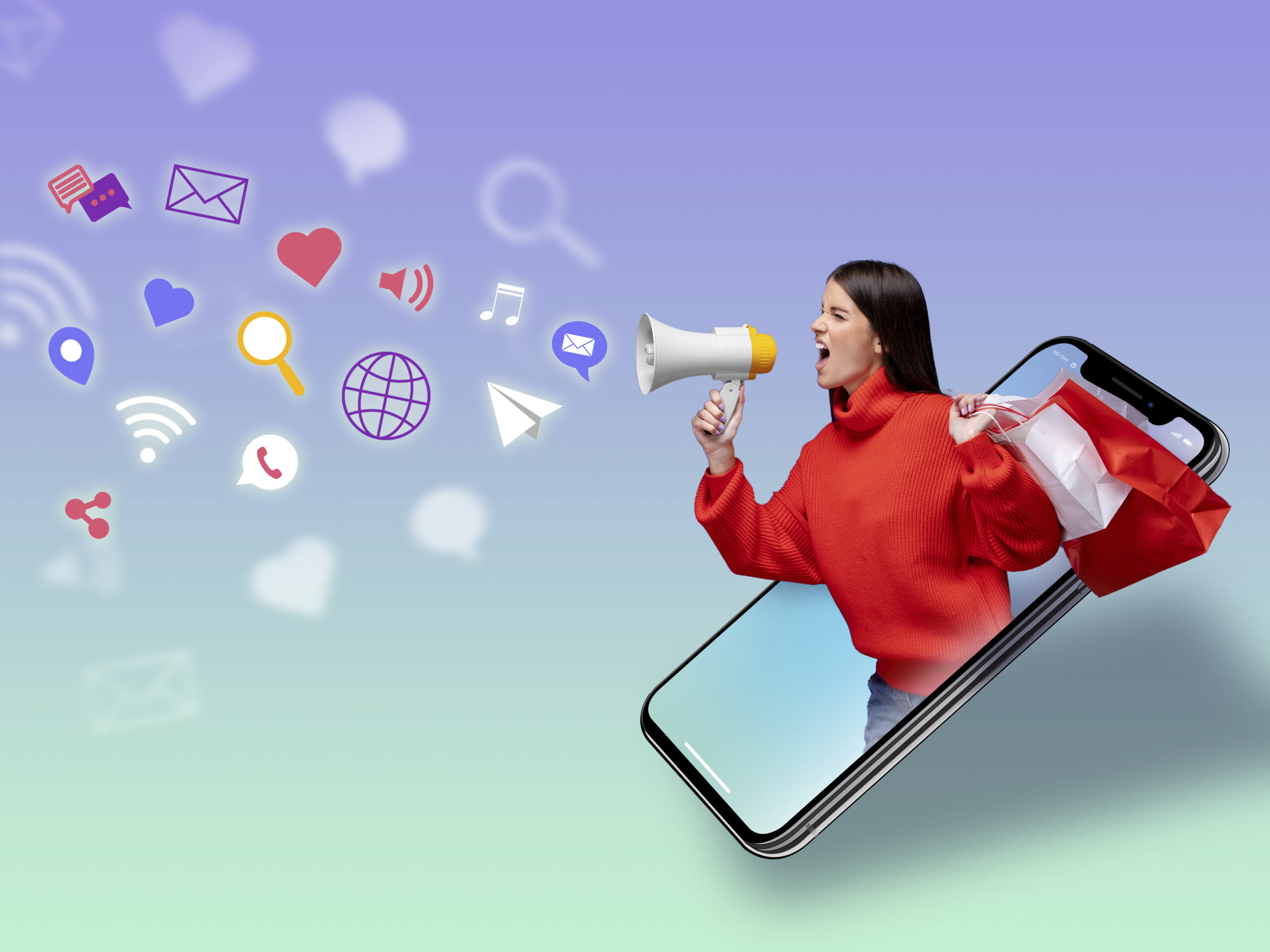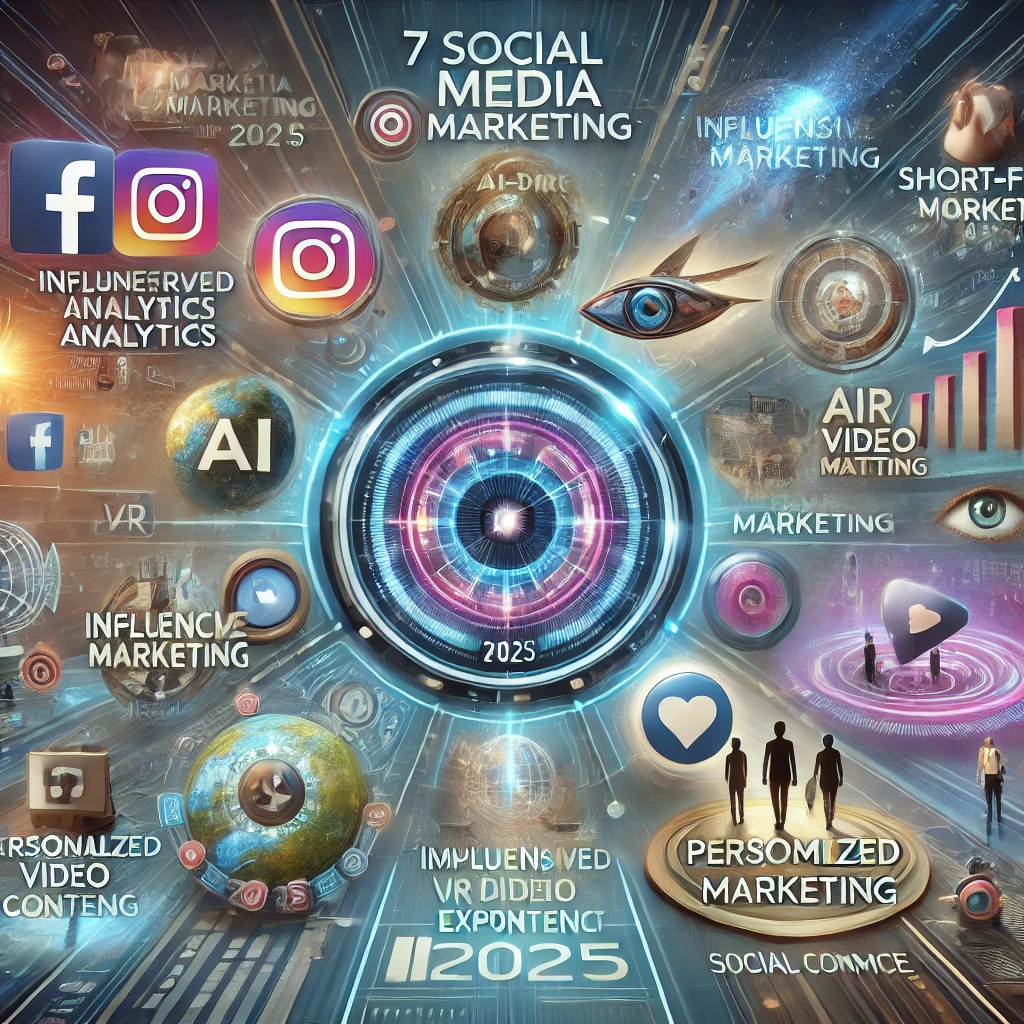7 Social Media Marketing Trends to Watch in 2025

Table of Contents
1. Introduction
The social media landscape is ultra-competitive and ever-changing.
From platform updates to evolving algorithms to new (or disappearing) features and shifting consumer behaviors, marketers need to constantly adapt to keep up – especially as experts report a fall in organic engagement on social networks.
So there are challenges, but the social arena is also a space for brands to make their mark and engage their customers (old and new) . With so many social media networks to choose from for your marketing activities, it can be difficult to keep up with what’s new and what opportunities are out there for driving brand awareness.
Plus the social media ecosystem is in flux as Meta faces investigation in the EU, has announced plans to stop using fact checkers and scales back its diversity and inclusion initiatives. While over at TikTok, its existence in the U.S hangs by a thread.
It’s our job at the DMI to keep an eye on trends. That’s why we keep in close contact with our range of experts to find out what’s coming down the line in 2025 in social media marketing. Here are the main things we found.
2. The battle between X, Bluesky and Threads
When billionaire Elon Musk bought X in 2022, marketers were unsure what would happen with the platform.
Then X was renamed X and the controversies began. From the return of banned users, allegations of the spread of misinformation and a fight with major advertisers leading to a boycott, it’s been anything but quiet for the social platform.
” A lot of our clients are seeing very low engagement rates on X and are struggling to get their messages seen. “
3. AI in social media
AI is transforming digital marketing and social media is no exception.
In fact, AI is integrated into key social media platforms to enhance features and help shape activities at scale. AI is being used by marketers to create social content, such as text, images, videos, and even influencers. It can help analyze data, drive personalization, automate customer service through advanced chatbots, and boost advertising performance on social networks
According to Statista, 38% of marketers said that increased efficiency was the top benefit of using AI for social media followed by easier idea generation (34%) and increased content production (33%).
You may already be familiar with content generation tools like ChatGPT, Jasper, orourney Midj1. However what many marketers have discovered is that the results from AI are only as good as the information you plug in.
Alison Battisby believes that the key to success is to use prompts. “There are some clever ways to use AI to customize your social media copy. Use custom prompts with instructions that give ChatGPT more ideas on how you would like to write. For example, what tone to use, what kind of voice to use, or which words to avoid,” she advised.
Advertising is another key area where AI can help boost social media performance. TikTok has launched TikTok Smart+ an AI-powered performance solution that can automate campaign management across targeting, bidding, and creative.
Grab Your Free Digital Marketing Carrer Session
4. The rise of employee-generated content (EGC)
According to Edelman’s Trust Barometer, 81% of consumers say that trust in a brand is crucial for making a purchase decision. This means that customers want authenticity and it’s up to companies to show that through their marketing and corporate social responsibility activities.
As marketers we know the value of user-generated content to raise brand awareness and encourage others to browse and purchase. But what about employee-generated content?
As customers look to buy from brands they trust, promoting content from employees can go a long way to showcasing a brand’s voice and personality. While this type of content may once have been saved for LinkedIn, it’s now cropping up across channels such as Instagram and TikTok.
Here’s an example from global lifestyle brand Anthropologie that talks to its employees while showcasing its products and offering a behind the scenes look at the company.
“[Promoting EGC] doesn’t mean that you always need to film content to go on your corporate channels. You could use employee profiles too, which we see a lot on LinkedIn. This allows for more faces and stories to be told from behind the scenes of the brand.” said Battisby.
This type of content can also be helpful in recruitment. If marketers can get a feel for your brand through employee advocacy then they may be interested in becoming part of your team.
Top tip: Bear in mind that EGC can be very cost-effective. Don’t make it complicated. Use a phone to film, ask employees to contribute to a blog or set up a recording to create a podcast.

5. Is it the death of hashtags?
The aim of using hashtags on social media is to help make your content discoverable to a captive audience.
But in recent years trending hashtags have been used by spammers to get content in front of consumers and clutter up people’s feeds. As a result, some social platforms are taking measures to avoid that happening as it has an impact on user experience.
At the end of 2024, Instagram announced it was removing the option to follow hashtags from the app. In addition, any topics that people already follow will no longer display posts and Reels in the main feed.
Battisby believes that as “all words in captions are being ranked anyway, so hashtags are becoming obsolete and not getting as much engagement as they used to.”
What this seems to indicate is that hashtags are less useful than they used to be. They now play a minor role in directing people to relevant content as social media algorithms become better at understanding what users want.
Top tip: Consumers are increasingly using social media networks for product discovery, brand research, and how-to videos. In particular, TikTok is being used as a search engine amongst younger generations, so it’s important to optimize social media content for search.
6. Short-form video dominates
Video has always been a popular format on social media, but the increased popularity of TikTok, Instagram Reels, and YouTube Shorts has resulted in an explosion of short-form videos.
In fact, Meta reported that 60% of time spent on Facebook and Instagram is now video.
With so much content online and attention spans shortening, short-form video provides brands with a way to communicate with customers in short, sharp bursts. The key is to be authentic and use storytelling so you communicate what you want in a short space of time.
Here are some tips to create great short-form videos:
- Build for vertical viewing
- Use audio
- Build in the ‘safe zone’ – areas on the screen not covered by handles, captions, music titles, descriptions or social reaction buttons
- Keep it short
- Write a strong caption
Top tip: Employee-generated content can be effective in this format through behind the scenes footage or a quick instructional video on a product.
7. Customer content overshadows influencer content
While influencer marketing can still be effective, many companies are realising that there’s a lot to gain from involving customers in their marketing activities.
In the past, some brands have received criticism for splashing out on influencers and treating them as the ‘social media elite’. This has made many of them rethink their strategy and start to invite customers to be a part of the experience.
By refocusing on customers, brands not only avoid some of that negative attention, but also engage with their wider audience, increase user-generated content and create what marketers call “immeasurable” positive brand sentiment for customer retention, according to a Business of Fashion article.
For example, skincare company Topicals hosted a “community trip” to France which was made up of a combination of influencers and regular customers, and this is what they plan to continue doing on all upcoming trips. For Topicals, bringing customers along is a “‘need to have’, not a ‘nice to have,’” according to its director of community and social impact, Natalie Browne Holmes.
Another beauty brand Refy also hosted an exclusive retreat in a branded villa in Mallorca for their closest community members.
This shift presents an opportunity for brands with a loyal following. If you’re lucky enough to have a big subscriber base then ensure that you leverage it to deepen connections with your customers by reaching out and offering them VIP experiences.
8. Security and regulation of social media
There has been a lot of criticism, and indeed legal action, towards social media platforms in recent years in regards to online safety and privacy, particularly for younger people.
Australia has gone as far as to ban children under 16 from using social media and will issue fines of A$50m ($32.5m or £25.7m) if platforms don’t comply. This ban is due to take effect sometime in 2026 so it’s unclear what is actually involved but it’s something marketers should watch.
In Europe, an investigation is ongoing for Facebook and Instagram over concerns that the platforms are creating addictive behavior among children and damaging mental health.
While some measures have been taken to make platforms more secure such as age verification tools and privacy for minors, a recent move by Meta to stop using third-party fact-checkers on Facebook in the United States is being seen as a rollback on security.
This decision caused surprise amongst consumers and policymakers, while advertising leaders told the Financial Times that they will reevaluate plans to advertise on Meta’s platforms over brand safety concerns. The social platform says it will rely on its users to correct inaccurate and false posts like they do on Threads and Instagram.
Meta also released a memo to announce its scale back of diversity and inclusion initiatives to join other companies like Amazon and McDonald’s who are retreating from hiring and training initiatives criticised by conservatives due to legal and political risks.
In addition, the fate of TikTok hangs in the balance in the United States as the Senate has ruled that they either need to go dark or sell up to continue operating there as it is seen as a threat to national security under Chinese control.
All of these developments demonstrate that the future of social media platforms is uncertain. But privacy and regulation are certainly huge influencers in its success or demise.